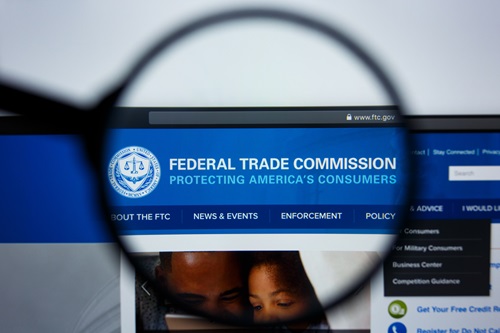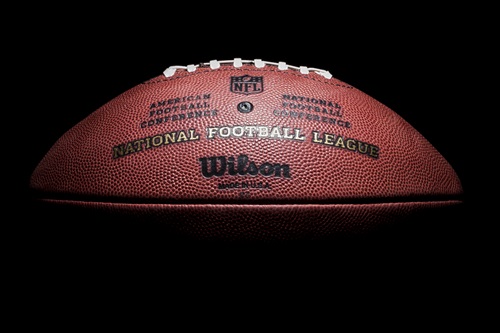
The pressure has been building for event owners to offer only tournament merchandise, including shirts and ball caps (as well as anything else), that is American made.
It’s a great goal and a good selling point for the merch. Even better news: The Federal Trade Commission (FTC) has been cracking down on unethical manufacturers and sellers who falsely claim that foreign-made products were “Made in the USA.”
The FTC’s efforts actually date back to the late 1990s but in recent months, some very high-profile cases have come to light. (The FTC’s special landing page for its “Made in the USA” efforts is here.)
Pushing up the profile of the FTC’s efforts is, of course, the Internet – and social media, as well as what might be some of the wittiest copywriting around. (An operation that claimed to have all USA-made products, with a portion of the proceeds going to veterans – well, the FTC found out none of that was going on, and the FTC publicly nicknamed the case “Uncle Sham.”)
And while some of the companies that have been hit with some heavy fines (among them, Williams-Sonoma, who was forced to pay $3.17 million after it was discovered its so-called “made in the USA” products were being manufactured overseas), the issue is touching on the youth sports market. Wal-Mart was also hit with complaints.
 Venerable industry stronghold Wilson Sporting Goods got slapped with an FTC order after it was discovered that some of its youth footballs, while marketed as American-made, were produced in Vietnam.
Venerable industry stronghold Wilson Sporting Goods got slapped with an FTC order after it was discovered that some of its youth footballs, while marketed as American-made, were produced in Vietnam.
Athletic footwear manufacturer New Balance settled a lawsuit in May with customers who alleged several of its shoes were not American made, despite having names like “Made in USA 990v2.”
Another offender was ROKA Sports. According to Advertising Law, the FTC looked into advertising claims made by ROKA that its eyewear was “Hand built in USA” or “Hand built in Austin, TX.” The FTC expressed concerns that ROKA overstated the extent to which its products are made in the United States due to the fact that some of its products incorporate imported frames, lenses, or other significant components.”
One apparel company went to the extraordinary step of removing “Made in China” labels and replacing them with “Made in the USA.” The FTC slapped the company with a fine of $211,335.
As of late May, more than 50 companies had been investigated and fined by the FTC, noted Bloomberg Law. Bloomberg’s article also carried the information that other agencies are involved in keeping the marketplace free of false advertising: “An investigation into the motocross and ATV parts maker Cycra, which touts its products as “proudly designed, developed and manufactured in Lexington, North Carolina,” gained momentum when US Customs and Border Protection agents intercepted some of its shipments from Taiwan. Inside, they found assembled products sporting “Made in USA” labels.”
And once the fine is paid, the matter is far from closed. Companies at fault must also notify their customers of the false claims and maintain certain records and file compliance reports with the FTC for the next 20 years.
That’s in addition to the roasting they get when the news gets picked up.
But what actually constitutes “Made in the USA?” Promotional resource site ASI Central notes, “For a product to be called Made in the USA, or to claim to be of domestic origin without qualifications or limits on the claim, it must be “all or virtually all” made in the United States. This means the final assembly or processing of the product occurs in the U.S., all significant processing that goes into the product happens here and all or virtually all ingredients or components of the product are made and sourced domestically. “The product should contain no – or negligible – foreign content,” says Mitchell J. Katz, a senior public affairs specialist at the FTC.
Federal rules on “Made in the USA” apply to claims on products themselves and labeling, as well as in advertising and marketing materials, including digital platforms like web-based ads, emails, social media and online product descriptions.”

The FTC is definitely in event owners’ corner, but where vendors stand may sometimes be an open question, says Print and Promo Marketing, which notes it is also illegal to mislead a customer by using ambiguous wording to hide the origin of a product:
“Say, for instance, a new tote bag is designed in Colorado but then actually produced in India. Calling this product “Created in the USA” would likely be considered deceptive by the FTC, as commission officials may conclude there’s a high likelihood that consumers would equate “created” with “made,” which indicates domestic manufacturing from largely domestic components. A qualified claim like “Designed in USA & Manufactured in India” would probably be more appropriate.”
FTC Chair Lina Khan cited the organization’s efforts on false Made in America claims during a House hearing earlier this summer.
The FTC will “use all available tools to ensure scammers who cheat consumers, honest businesses, and American workers face heavy consequences for their lawbreaking,” she said in written testimony.
The problem faced by many event owners is that merch is often designed in-house but ordered online, meaning the event owner is unable to inspect beforehand the items to be engraved, embroidered or imprinted. And once ordered, items may arrive too late for the buyer to have any recourse.
An additional obstacle, says Bloomberg Law, is the fact that Made In the USA merchandise may cost more than that made cheaply offshore.
For some industries, making goods in America still tends to be more expensive than abroad, but reshoring is “the long game,” Scott Paul, president of the Alliance for American Manufacturing, told Bloomberg reporters. “There are still a lot of obstacles that stand in the way, but it’s more favorable than it has been for a very long time.”

